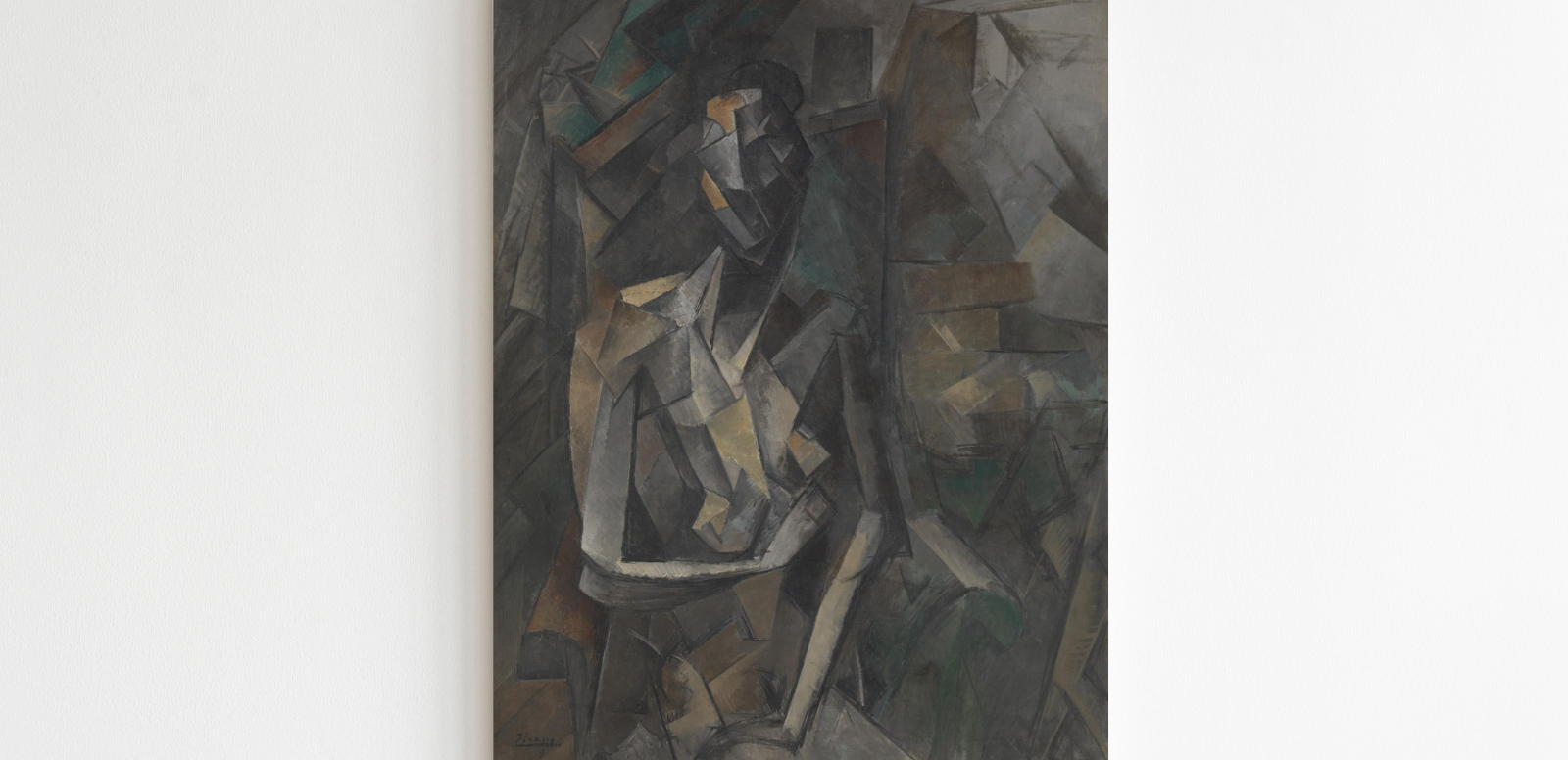
© Sucesión Picasso, VEGAP, Madrid, 2023
This work is one of the experiments initiated by Pablo Picasso and Georges Braque from 1908 onwards, breaking with the established canons of perspective and representation by geometric planes in compressed spaces. In these works, which the critic Vaucelles called "small cubes", the objects are reduced to geometric elements, decomposed and sometimes presented from multiple angles. The subjects they deal with form part of traditional genres: landscapes, still lifes or, as in this case, portraits in increasingly fragmented compositions.
In this portrait we recognise the form of the woman thanks to the space surrounding the main figure. In contrast to works with a broader and more varied palette, this portrait features a neutral range of browns and blacks that focus attention on the geometric composition. The figure is composed of different planes, angles, lines and shading for the arms and head, abstracting the face and deforming the torso, which we know is naked from the title.
The cubism of Picasso, who met Chanel around 1917, was to have a notable influence on the simplification she had undertaken in women's fashion. As Paula Luengo, curator of the Picasso/Chanel exhibition at the Museo Tyssen, explains, the analytical cubism of Picasso and Bracque had a strong influence on Chanel's fashion. Straight forms, different points of view, monochrome, textures and new materials ... are some of the elements we see as a result of this influence.
This work is in the Tate Museum, acquired in 1949.

